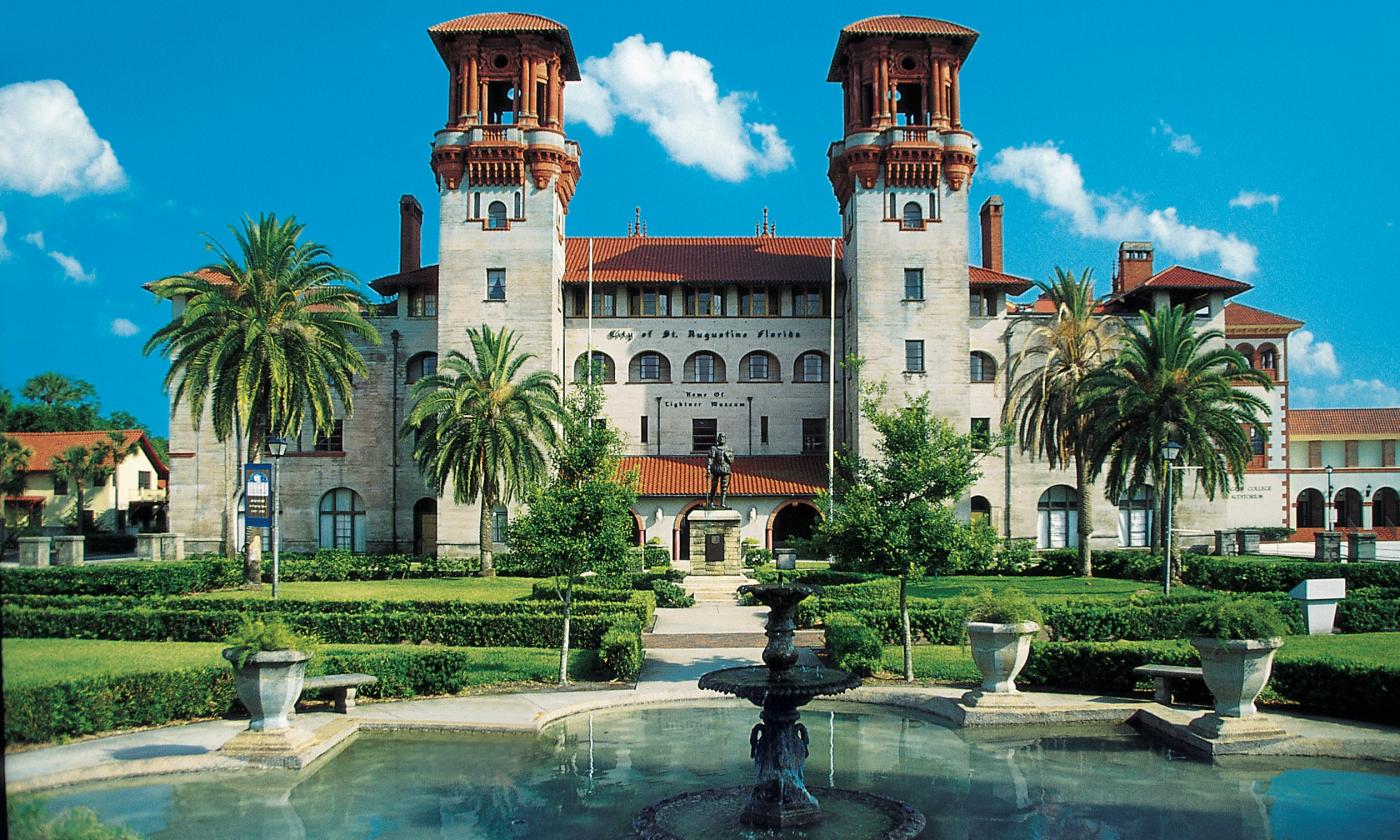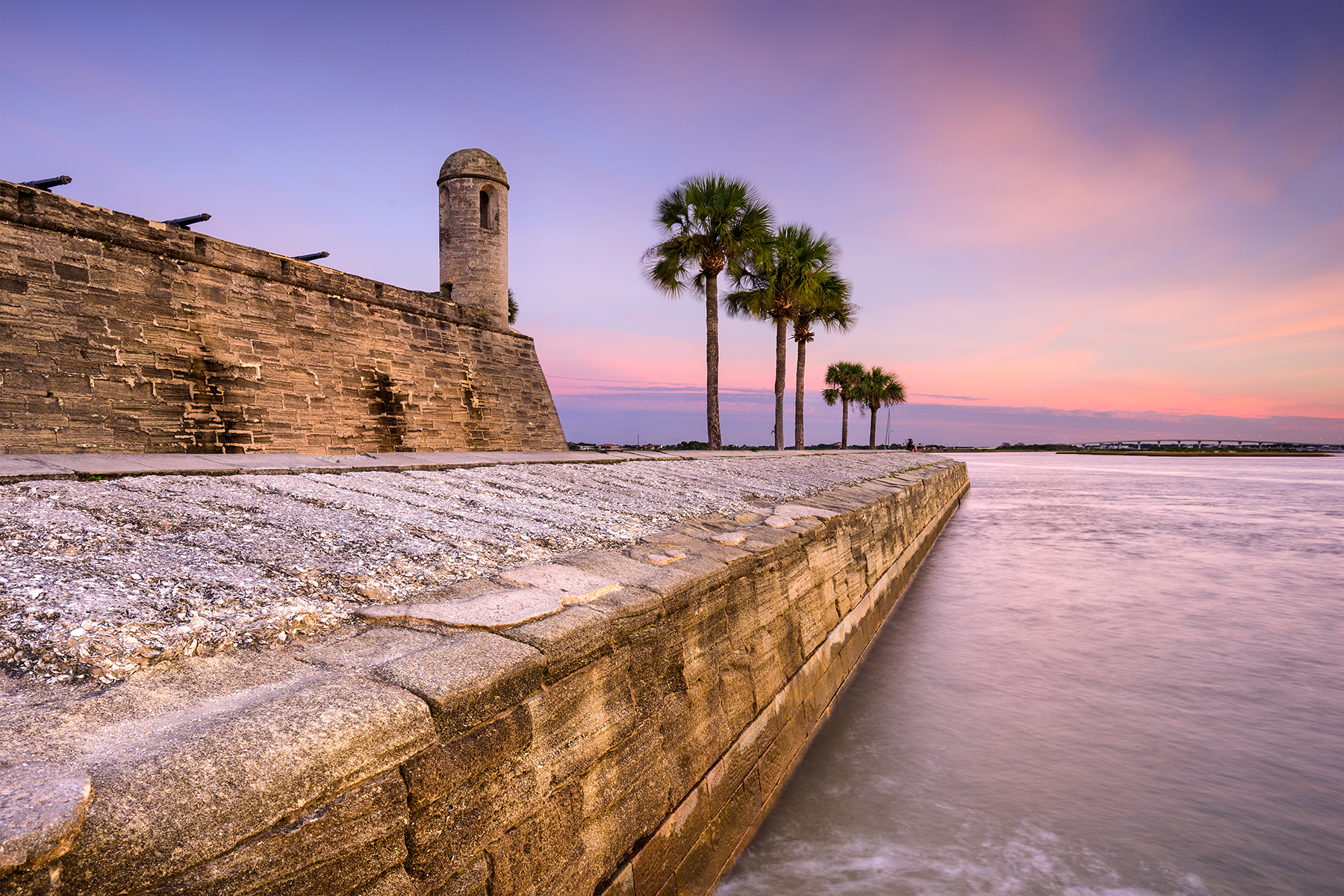
St. Augustine: America’s Oldest City, A Timeless Tapestry of History and Charm
In the northeastern corner of Florida, where the Matanzas River meets the Atlantic Ocean, lies a city that defies the sunshine state’s reputation for newness and ephemeral charm. St. Augustine, founded by Spanish admiral Pedro Menéndez de Avilés in 1565, proudly wears the mantle of the oldest continuously inhabited European-established settlement in the United States. It is a city where cobblestone streets whisper tales of conquistadors and pirates, where Gilded Age opulence stands testament to a railway magnate’s vision, and where the echoes of centuries past resonate alongside the vibrant pulse of modern tourism. More than just a collection of historical markers, St. Augustine is a living, breathing museum, a testament to resilience, and a captivating destination that offers far more than a simple stroll through yesteryear.
The story of St. Augustine begins with a geopolitical struggle. France, seeking to expand its influence in the New World, established Fort Caroline near present-day Jacksonville in 1564. Spain, already claiming Florida by right of discovery, viewed this as a direct challenge to its vast colonial empire. King Philip II dispatched Menéndez with a mandate to expel the French and secure Spanish dominion. On September 8, 1565, Menéndez landed and founded St. Augustine, naming it for the saint on whose feast day his fleet had sighted land. Just weeks later, he successfully routed the French, solidifying Spain’s claim and setting the stage for centuries of Spanish influence.
The early years were fraught with challenges. Disease, famine, and constant threats from Native American tribes and rival European powers, particularly the English, tested the resolve of the nascent settlement. Sir Francis Drake, the notorious English privateer, sacked and burned St. Augustine in 1586, but the Spanish rebuilt. The most enduring symbol of this struggle and resilience is the magnificent Castillo de San Marcos. Begun in 1672 and taking 23 years to complete, this star-shaped fortress is a marvel of 17th-century military engineering. Constructed from coquina, a local shell aggregate that proved remarkably effective at absorbing cannon fire rather than shattering, the Castillo never fell to enemy attack. Its formidable walls have witnessed countless sieges, protected Spanish treasure, and served under both Spanish and British flags, making it an irreplaceable landmark and a powerful reminder of the city’s strategic importance.

"The Castillo isn’t just a fort; it’s a monument to endurance," says Dr. Elizabeth Adams, a local historian. "It’s seen empires rise and fall, yet it stands, a silent guardian over the Matanzas. When you walk its ramparts, you’re literally treading on centuries of history."
For over 200 years, St. Augustine remained a remote, often neglected outpost of the Spanish Empire, primarily serving as a military base and a launching point for missions to convert the indigenous population. In 1763, after the Seven Years’ War, Spain ceded Florida to Great Britain in exchange for Havana. The British period, though brief (1763-1783), brought some development, but St. Augustine was returned to Spanish control after the American Revolutionary War. Finally, in 1821, with Spain’s New World empire crumbling, Florida was sold to the United States, and St. Augustine’s colonial chapter officially closed.
Yet, its legacy endured. The narrow, winding streets of the historic district, the Spanish colonial architecture, and the very names of its thoroughfares—St. George Street, Cordova Street, Aviles Street—all speak to its foundational past. Visitors today can explore the Oldest Wooden School House, dating back to the 18th century, or visit the González-Alvarez House, Florida’s oldest surviving Spanish colonial dwelling. These sites, along with numerous other museums and historical re-enactments, offer immersive glimpses into the daily lives of St. Augustine’s early residents.
The city’s second great transformation arrived in the late 19th century, not through conquest, but through the vision of an industrial titan: Henry Flagler. A co-founder of Standard Oil, Flagler became captivated by Florida’s potential as a winter resort for wealthy Northerners. He invested heavily, building the Florida East Coast Railway to extend southwards and constructing a series of magnificent, opulent hotels that defined the Gilded Age. St. Augustine became the crown jewel of Flagler’s empire.
His grandest creation was the Hotel Ponce de Leon, an architectural masterpiece completed in 1888. Designed by the renowned firm of Carrère and Hastings, it was one of the first major buildings in the world to be constructed with poured concrete and featured exquisite Spanish Renaissance Revival architecture, Tiffany stained glass, and electricity. Today, this iconic building houses Flagler College, its former ballrooms and dining halls now classrooms and student dormitories, still retaining their original grandeur.
Across the street stood Flagler’s Hotel Alcazar, built in 1889, equally lavish and designed to offer a full range of leisure activities, including the world’s largest indoor swimming pool. This structure now houses the Lightner Museum, a fascinating collection of 19th-century art, antiques, and curiosities, reflecting the eclectic tastes of the era. Flagler’s investments reshaped St. Augustine, transforming it from a sleepy former military outpost into a premier tourist destination, drawing a new wave of visitors and wealth.
"Flagler didn’t just build hotels; he built an industry," notes Sarah Jensen, a local tour guide. "He saw the potential for Florida as a playground for the rich and laid the groundwork for the tourism boom that continues to this day. His legacy is etched into the very fabric of our city, blending seamlessly with the Spanish past."
Today, St. Augustine skillfully balances its rich historical layers with the demands and delights of modern tourism. The historic district, centered around the pedestrian-only St. George Street, is a lively hub of activity. Here, visitors can browse unique boutiques, sample local cuisine, listen to street musicians, and watch costumed interpreters bring history to life. Carriage rides offer a charming way to explore the narrow lanes, while ghost tours delve into the city’s more spectral legends.

Beyond the colonial core, St. Augustine offers a diverse array of attractions. The St. Augustine Lighthouse & Maritime Museum stands tall on Anastasia Island, offering panoramic views after a climb of 219 steps, and preserving the area’s vital maritime heritage. The Fountain of Youth Archaeological Park, while tapping into the enduring myth of Ponce de León’s quest, is also a significant archaeological site, revealing layers of Timucuan Indian and early Spanish settlement.
The city’s coastal location also means beautiful beaches. Anastasia State Park and St. Augustine Beach provide miles of pristine sand, ideal for swimming, sunbathing, surfing, or simply enjoying the ocean breeze. The Matanzas River and Intracoastal Waterway offer opportunities for boating, kayaking, and fishing, showcasing Florida’s natural beauty beyond the historic sites.
St. Augustine’s culinary scene reflects its diverse influences, with fresh seafood a highlight, alongside Spanish-inspired dishes, upscale dining, and casual eateries. Craft breweries and distilleries have also found a home here, adding a contemporary flavor to the historic setting. The city hosts numerous festivals and events throughout the year, from pirate and colonial re-enactments to art walks and music festivals, ensuring there’s always something happening.
Yet, like any city rooted deeply in its past and heavily reliant on tourism, St. Augustine faces its own set of challenges. Preserving its historic structures against the ravages of time and climate change, particularly rising sea levels and increased hurricane activity, is an ongoing battle. Managing the influx of visitors, ensuring sustainable development, and maintaining the delicate balance between authentic historical experience and commercial viability are constant considerations for city planners and residents.
"Our biggest challenge is to be good stewards of this incredible heritage while also building a vibrant, livable city for today and tomorrow," says a city official who wished to remain unnamed. "It’s about finding that sweet spot where history isn’t just preserved, but celebrated and integrated into modern life, without being overwhelmed by it."
In essence, St. Augustine is more than just a destination; it’s an experience. It’s a place where the grandeur of empires, the daring of explorers, and the ingenuity of entrepreneurs converge. It reminds us that America’s story began long before 1776, woven with threads from across the Atlantic. From the unyielding coquina walls of the Castillo de San Marcos to the majestic halls of Flagler College, and from the bustling energy of St. George Street to the tranquil expanse of its beaches, St. Augustine continues to unfold its timeless tapestry, inviting every visitor to become a part of its ongoing narrative. It stands as a living testament to the enduring human spirit, a city that has not merely survived, but thrived, by embracing its multifaceted past while steadily building its future.


